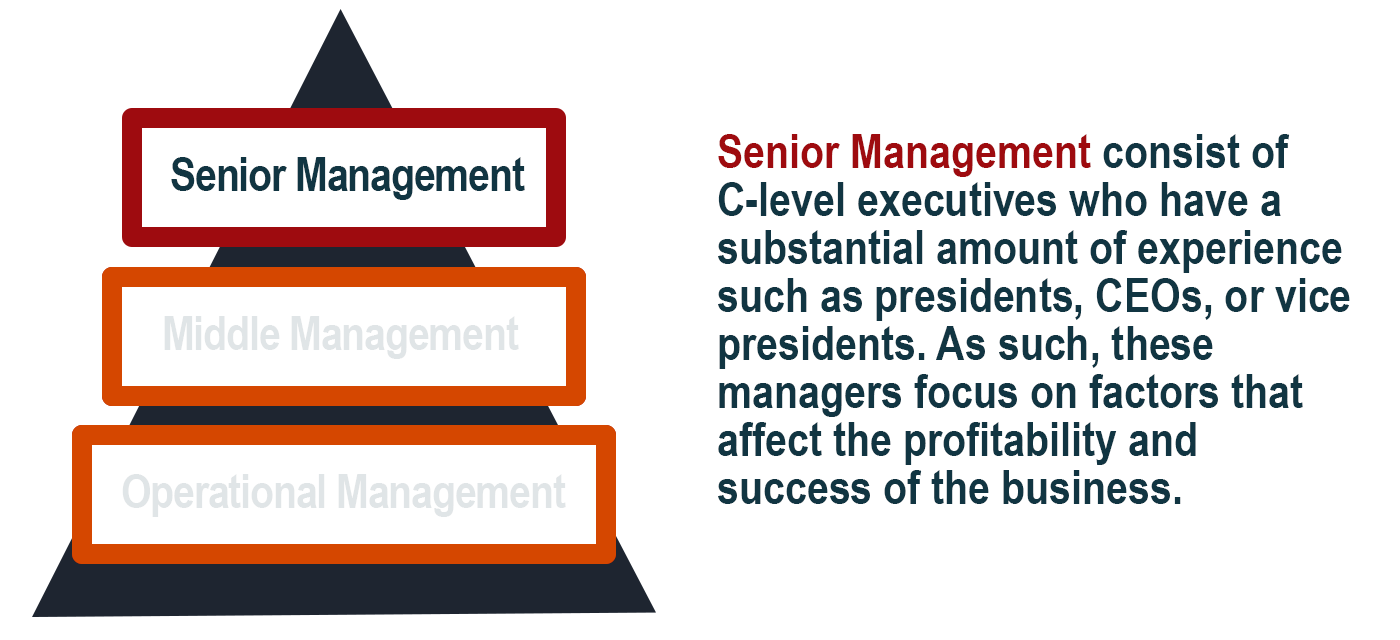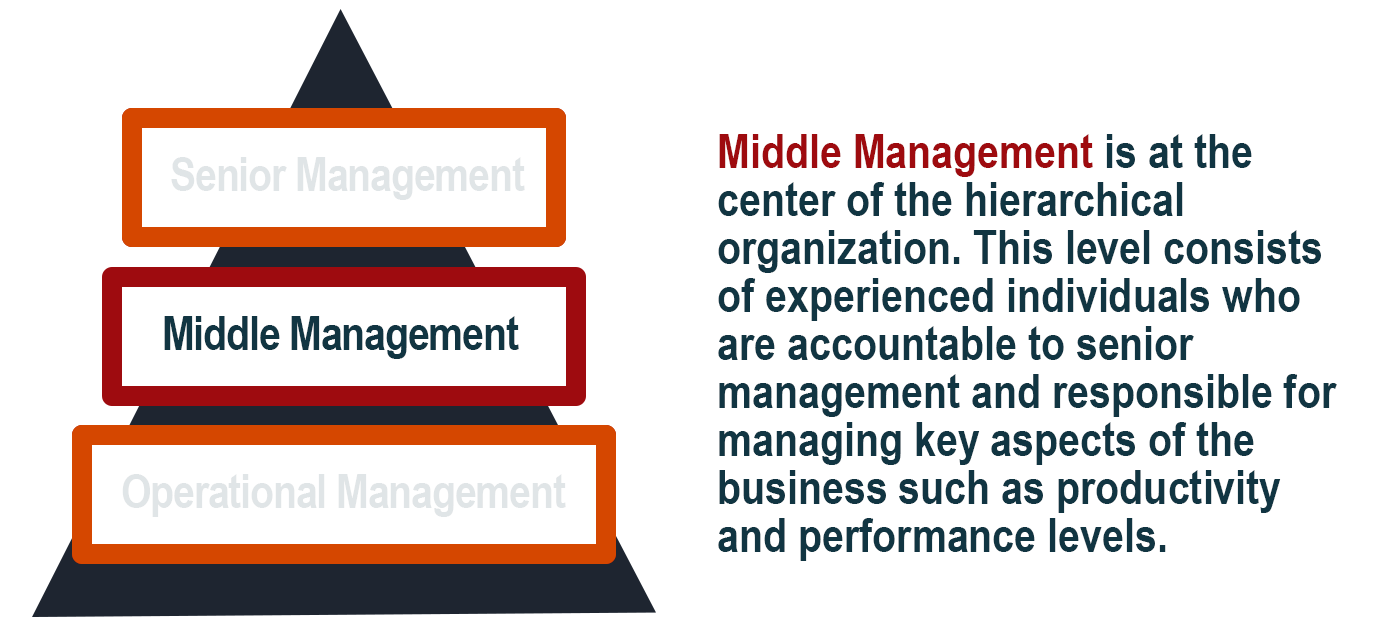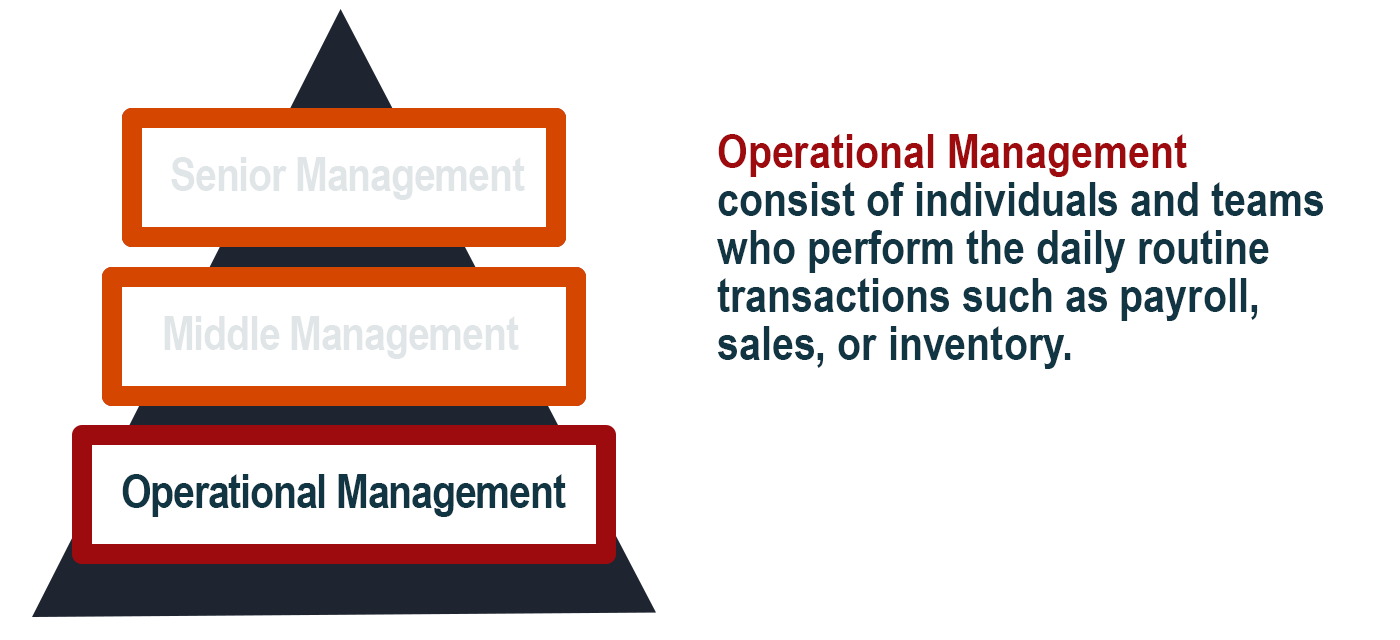
MIS390:
Lesson 1: Information Systems Overview
Introduction
Watch Video 1.1. Uber Business Model Innovation, which describes how Uber's ride-hailing app was used to disrupt the ground transportation industry.
SPEAKER: So the most important reason why customers love Uber has its source in the design of the app and the service. As you'll see later, design innovation fits into the value proposition block. When you need a ride, you just pull out your mobile phone and tap a button to order a car. The phone's GPS knows exactly where you are. The driver knows where you're going because you enter the address on your phone as well. And the app has your credit card number, so there is no financial transaction between you and the driver.
Now just imagine all the steps that have been deleted compared to the traditional taxi industry. Before, you needed to find a taxi company phone number. That already was a huge obstacle. Then you would need to talk to an operator and tell them your address. Then they would send you a taxi to pick you up, but you couldn't know exactly when it was coming. And finally, you would need to take out a payment method and use it manually at the end of the ride.
So Uber literally combined all these numerous steps into a few button taps on a well-designed mobile app. So here design innovation is key, but not so much the visual design, as we will explain later, but mainly the service design, the easier and more convenient customer journey through the service from the order until you are delivered to your destination.
That's already a rule to remember for any business-- reduce the steps that your customer has to go through to enjoy your service as much as possible. Think about their actions from the moment they want to buy something from you and the moment they finally get it. How can you make it easier and faster for them? And for Uber, this innovation also extends to the channels, obviously. The channels block is about sales and delivery channels, and so here Uber app is definitely an innovation.
The sale happens through a mobile app and not through a website booking or a phone call to a taxi company. But, of course, for Uber, this doesn't stop here. Next innovation which makes Uber so successful in financial terms is a legal one. So Uber claims to be a technology company and not a transportation company. This is very important because they treat their drivers as independent contractors and not employees.
So in terms of Uber internal processes, their drivers are considered key partners on the business model canvas and not key resources. If drivers were Uber employees, it wouldn't be as profitable for them anymore because they would need to pay way more taxes, and so it would also be more expensive for their clients.
So Uber is constantly navigating a complex legal landscape on a slippery slope, and that can be very dangerous. For now, though, it works. Also, the software that Uber created allowed it to innovate on the revenue model, as well, with the surge pricing. It automatically raises the prices when demand is high and offer is low, and so both the drivers and the company can earn more money.
This is called dynamic pricing, and it's one of the innovative pricing strategies that we'll discuss about later in this course. And finally, once you take all these major business models innovations together, there are yet more consequences for the other blocks of the business model. For example, more customers are ready to use Uber services than taxis. A lot even never considered using car transportation services before Uber came to the market.
So as you can see, Uber's most attractive features for their customers are the innovative design of the service and the lower prices because Uber internal processes are different compared to the traditional taxi industry.
And if we talk about Uber's disruptive global success. Of course, we have to mention their huge investors and their ruthless execution, but that's another topic. The origin of their success can be found in their business model innovation, which offers a better service to customers and lower prices.
[MUSIC PLAYING]
Private, public, and nonprofit organizations are using information systems to solve problems, transform business processes, and achieve strategic objectives. While there are many benefits associated with the use of information systems, there are also risks and challenges.
Critical Thinking 1.1. How does Uber’s ride-hailing app improve its operational efficiency and customer experience as opposed to a traditional taxi service? What are some of the risks posed by ride-sharing services?
Learning Objectives
After completing this lesson, you should be able to do the following:
- Describe how information systems are transforming business operations.
- Describe how information systems enable an organization to achieve one or more strategic business objectives.
- List and describe the management, organization, and technology dimensions of information systems.
Lesson 1 Readings and Activities
By the end of this lesson, make sure you have completed the readings and activities found in the Lesson 1 Course Schedule.
What Is an Information System?
Information systems and information technologies are terms that are often used interchangeably. From a technical perspective, an information system is a set of interrelated components that are used to collect, store, manipulate, and disseminate information with the goal of supporting decision-making, analysis, visualization, and control in organizations. Information technologies, however, consist of all the various hardware, mobile devices, and software that organizations use to achieve their strategic business objectives.
Information systems consist of the following six components:
- computer hardware and mobile devices;
- software;
- data;
- networking and telecommunications technologies;
- procedures, and
- people.
Select each component below to learn more about it.
Computer Hardware and Mobile Devices

Computer hardware and mobile devices refer to the physical components, such as modems, central processing units, mobile devices, kiosks, servers, and routers.
Computer Software
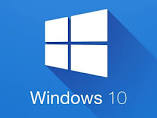
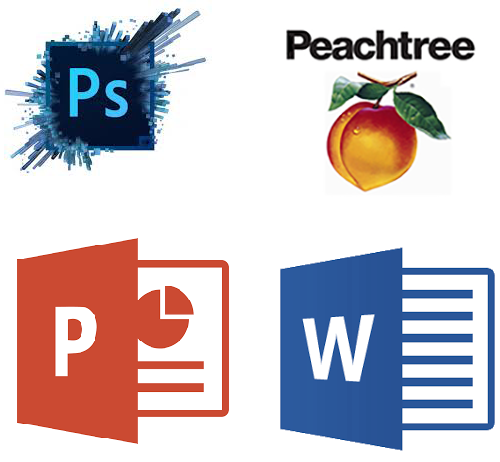
Software refers to programs that direct the computer processor to perform certain functions. Software can be one of two types: operating systems software or application software.
- Operating systems software, such as Windows 10, is the underlying program on which other programs (applications) run.
- Application software refers to any program created to support a specific task—for example, Microsoft Word, Microsoft PowerPoint, Photoshop, and Peachtree.
Data

Data refers to raw facts that do not have any associated meaning. Examples consist of bar code data from scanning a jar of peanut butter, jelly, bread, and milk at a supermarket checkout.
Information systems are used to process data into meaningful information. For instance, the data from all consumer purchases of peanut butter, jelly, bread, and milk is transformed into meaningful information to determine the percentage of products that are purchased together.
Management can use this information to determine the arrangement of products in the store. In addition, the information can be used to decide which item can be placed on promotion to stimulate the purchase of complementary products.
Networking and Telecommunications Technologies
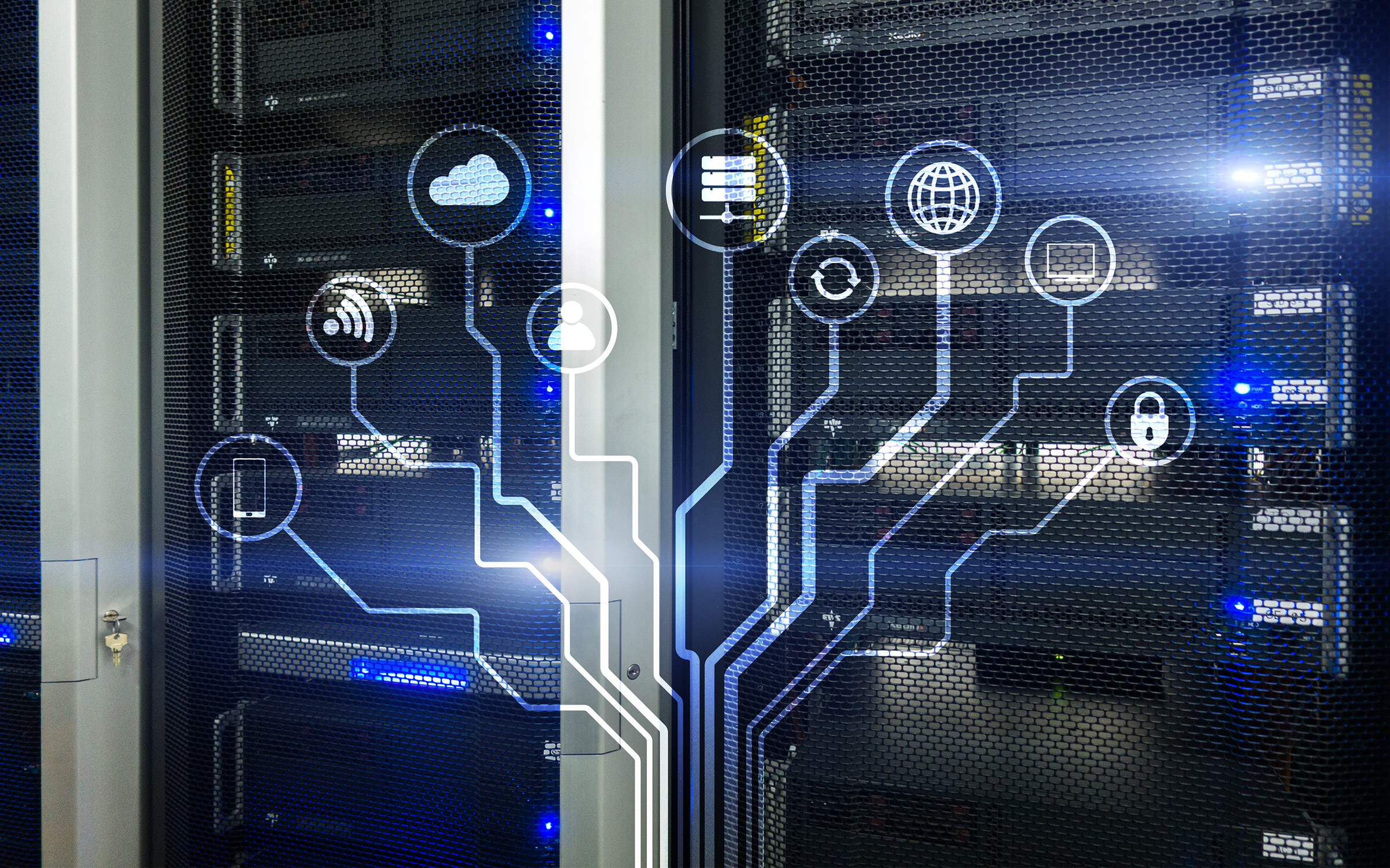
Networking and telecommunication technologies consist of both the physical devices and software that links nodes on networks in order to facilitate the transfer of data and information. Applications include the Internet, Wi-Fi, RFID, Bluetooth, and so on.
Procedures

Procedures govern how an information system operates. All systems have rules that govern their operations. For example, one procedure in an information system can explain how users gain access to a system, such as through an authorized username and password.
People
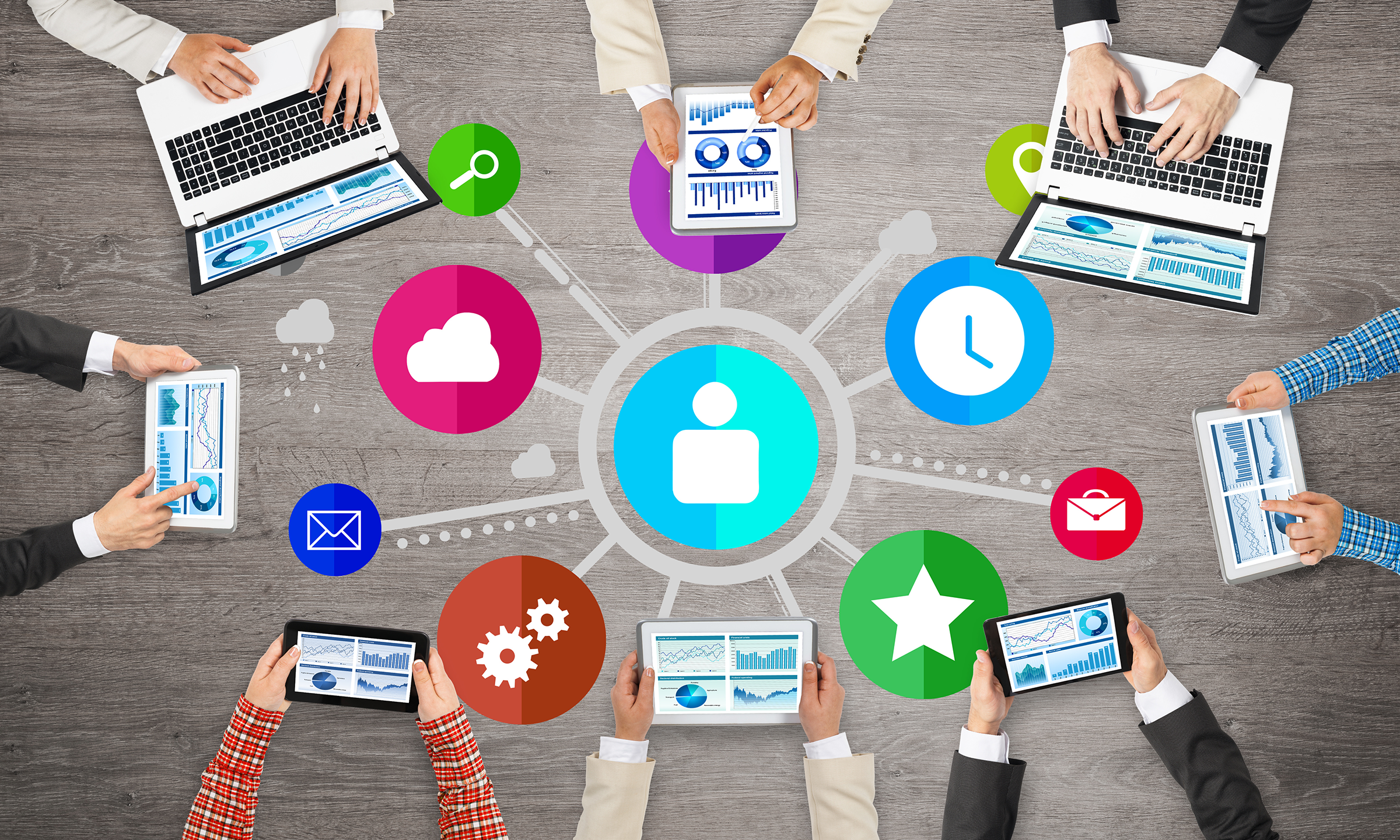
People are the most important component of an information system. As such, information systems consist of people operating in different roles. These roles can be associated with different job titles, such as senior managers, middle managers, data workers, knowledge workers, programmers, and end users.
Information systems are impacted by three main factors: management, organization, and technology. These are broad areas that will have differences in each specific case. For example, management can determine the timeline for a new information system, the organization can allocate a specific budget, and the technology could be focused for use on mobile devices.
Basic Activities: Input, Process, and Output
Information systems perform three basic activities: input, processing, and output.
Input
The input stage consists of collecting or capturing raw data.
Process
Once the data enters the system, it is then processed to produce meaningful information.
Output
Output transfers the information to people or systems.
Feedback Loop
Feedback consists of analyzing information from the output state to help management evaluate or refine the input. The activity of continuous evaluation of output creates a loop that enables organizations or systems to self-regulate. This is referred to as a feedback loop.

Example
Consider this process in a local pizza shop.
Input
The input would consist all the raw materials that it takes to create the pizza, such as the flour, sauces, cheeses, and toppings.
Process
The process is the master chef mixing all the ingredients to create the output.
Output
The output is your piping hot pizza!
Feedback
Feedback occurs when customers constantly complain that there is not enough cheese on the pizza. As a result, the inputs are revised to increase the amount of cheese.
The Digital Firm

A continuous stream of information technology innovations, such as smartphones, tablets, kiosks, big data, and cloud computing, are essential tools required for conducting business in the 21st century. These tools have enabled organizations to create new or improved business models and processes with information technologies. As a result, we are witnessing a significant transformation of business operations.
Characteristics of a Digital Firm
Business transformation creates the conditions for a digital firm. There are three important characteristics of a digital firm:
- First, nearly all the organization’s significant business relationships with customers, suppliers, and employees are enabled or mediated by digital technologies.
- Second, core business processes are facilitated through digital networks that span the entire organization. A business process is defined as a set of actions that are completed to achieve a specific objective for the business, such as processing an online order, producing a product, delivering finished product to the customer, and providing after-sales service.
- Third, new technologies enable organizations to create new business models. A business model describes how an organization produces, delivers, and sells a product or service. For example, Video 1.1 illustrates how Uber's significant business relationships and core business processes are enabled by information technologies.
Finally, digital firms are capable of sensing and responding to domestic and global environments more rapidly than traditional firms. As a result, digital firms may have an advantage over traditional firms at surviving and prospering in turbulent environments.
Information Systems and Strategic Businesses Objectives

Information systems are a necessity of doing business in the 21st century. Moreover, information systems enable organizations to thrive and survive during turbulent times. As a result, organizations invest in information systems to achieve six strategic business objectives: (1) achieve operational excellence; (2) create new products, services, and business models; (3) improve customer and supplier intimacy; (4) improve decision-making; (5) establish competitive advantage; and (6) survive.
Achieve Operational Excellence

Businesses continue to seek ways to improve the efficiency of their operations. Efficiency refers to identifying the best way to complete a task or process. Information systems provide many of the tools that are used to achieve higher levels of efficiency and productivity in organizations. For example, in 2018 Walmart was ranked as the number one company on the Fortune 500 list, with over $500 billion, up 2.8% from the previous year (Fortune, 2019).
Walmart uses a variety of information systems to enable significant business relationships with its suppliers and customers. For instance, Walmart uses its Retail Link systems to achieve digital integration with its suppliers to facilitate inventory management. When a customer purchases an item, the information is automatically shared with the appropriate supplier. By enabling the suppliers to manage inventory, Walmart has significantly improved the inventory management process while reducing costs that can be passed on to consumers.
Create New Products, Services, and Business Models
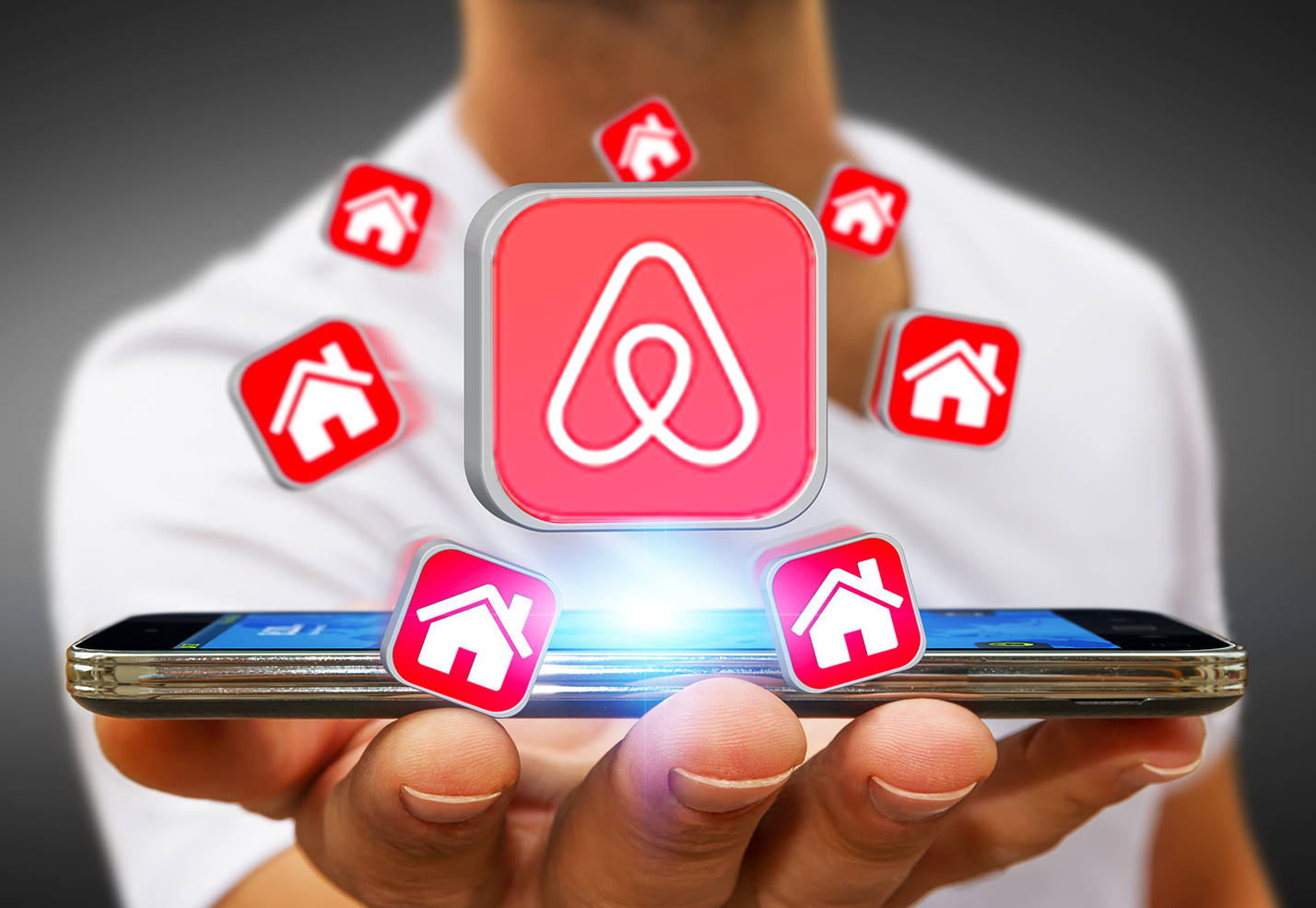
Entrepreneurs and organizations are increasingly using information technologies to create new products and services as well as new business models. While you are familiar with how organizations have integrated information technologies into their products (e.g., music, movies, news) and services (e.g., finance, travel, and education), you are more than likely unfamiliar with the concept of business models. As mentioned previously, a business model describes how an organization produces, delivers, and sells a product or service.
In today’s on-demand economy, organizations are increasingly using innovative technologies to create new on-demand business models to provide real-time fulfillment of products and services. For example, Airbnb’s housing rental app enables the organization to automate the entire process from booking accommodations to paying for the service.
Improve Customer and Supplier Intimacy
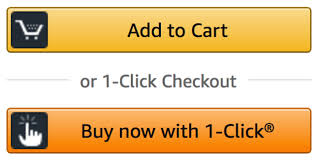
Intimacy between the business and either its customers or its suppliers refers to a strengthening of the bond between the two parties. Information systems can be used to increase the bond between the business and both its customers and suppliers. For example, using information systems, Amazon has achieved high customer intimacy by allowing one-click checkout, recommending relevant products to customers, and allowing customers to maintain a wish list of products.
Improve Decision-Making
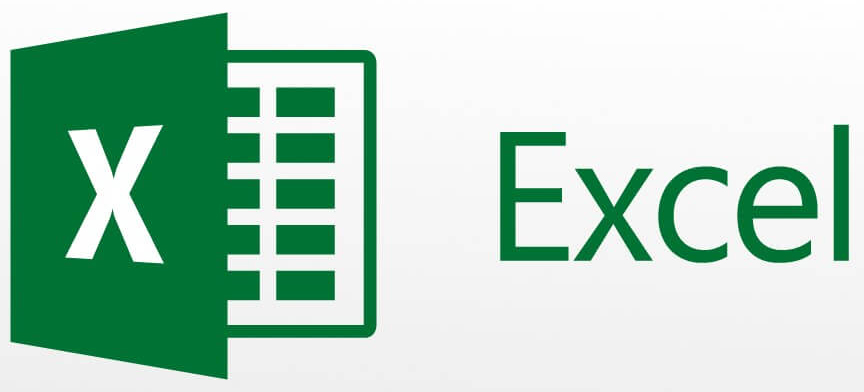
Information systems give managers the tools to facilitate data-driven decision-making. For example, a manager can look at the data about what products are selling and make a better decision about what products need to be reordered and what quantity of product should be reordered. In addition, using a spreadsheet tool such as Microsoft Excel, a manager can examine different pricing scenarios to find the optimal price for a product.
Achieve Competitive Advantage
When organizations achieve one or more of the aforementioned strategic business objectives—(1) operational excellence; (2) new products, services, and business models; (3) customer and supplier intimacy; and (4) improved decision-making—they are more than likely to have achieved a competitive advantage. For example, Walmart derives significant cost savings from using Retail Link to achieve higher levels of efficiency and productivity. As a result, Walmart is recognized as the low-cost leader in the retail industry.
Survive
Businesses today incorporate information systems into their daily activities as a necessity for doing business. Sometimes these necessities are driven by consumer preferences and demand. For example, using the Internet and mobile apps has become a business necessity and a source of competitive advantage. As a result, organizations that are not using innovative technologies, such as digital payment systems and mobile apps, may be at a competitive disadvantage in certain markets.
Dimensions of Information Systems
From a business perspective, an information system represents an organizational and management solution to a challenge or problem posed by the environment. For example, Uber’s ride-hailing app and Airbnb’s housing rental app represent organizational and management solutions for matching customers with service providers.
Organizational Dimension
An organization is a group of people who have come together for a specific purpose. Examples of organizations include businesses, governments, nonprofits, clubs, and associations. Even though organizations can differ greatly, they have common components. The following are components that are common across different types of organizations.
Structure
An organization can have a formal structure, with a president or CEO and other senior executives, or a more informal structure, in which most members of the group have the same level of power. Businesses typically have a more formal hierarchical structure, as shown in Figure 1.3. Select each of the layers in Figure 1.3 for a brief overview of each.
Figure 1.3 shows the hierarchical structure of business. The three levels are executive, managerial, and operational. The executive level is at the top of the pyramid, the managerial level is in the middle of the pyramid, and the operational level is at the base of the pyramid.
Functional Areas
Within each organization, different units are responsible for different tasks. Tasks are grouped into different functional areas. In each functional area, employees are trained to execute relevant activities. For example, at Penn State and most other organizations and businesses, the human resources (HR) department is a functional area that deals with all employee-related matters, such as hiring, training, firing, and retirement.
The eight images below represent the main functional areas of business. Click on each image to learn about the role, as well as sample jobs for each functional area.
-

Accounting Role: Manages the financial assets and liabilities of the business.
Sample Accounting Jobs: auditor, bookkeeper, certified public accountant (CPA), tax specialist. -

Finance Role: Forecasts the future performance of the business.
Sample Finance Jobs: financial analyst, billing analyst, controller, risk manager, chief financial officer (CFO). -

Marketing Role: Distributes information about a company's products and services with the intent to sell.
Sample Marketing Jobs: director of advertising, web marketing manager, communications director. -

Sales Role: Sells the company's products and services.
Sample Sales Jobs: sales representative, cashier, sales manager, retail manager. -
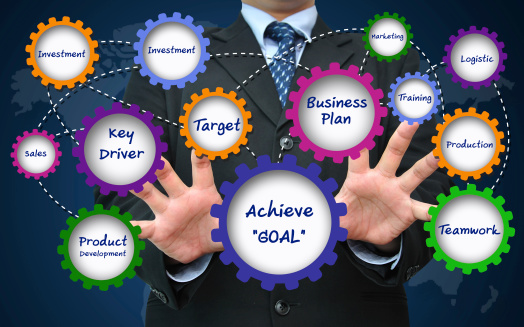
Operations Role: Obtains and converts resources into products and services for the business.
Sample Operations Jobs: operations manager, operations assistant, operations analyst, compliance officer. -

Customer Service Role: Manages the relationship between the business and its customers.
Sample Customer Service Jobs: customer service representative, call service supervisor, dispatcher, customer care agent, client support manager. -

ITC Role: Develops, tests, and maintains the technology infrastructure for the business.
Sample ITC Jobs: IT support staff, help desk manager, consultant, chief information officer (CIO), network security engineer. -
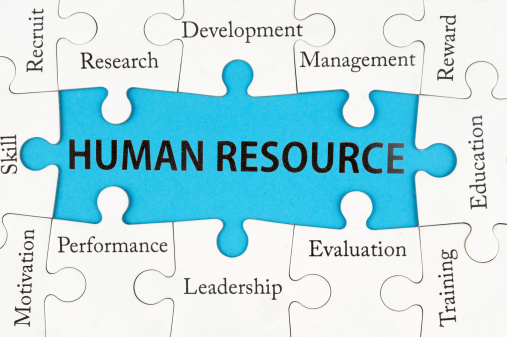
Human Resources Role: Conducts the hiring, retention, training, dismissal and many other employee-related activities of the business.
Sample Human Resources Jobs: HR manager, recruiter, benefits specialist, employee relations manager, talent acquisition coordinator.
Business Process
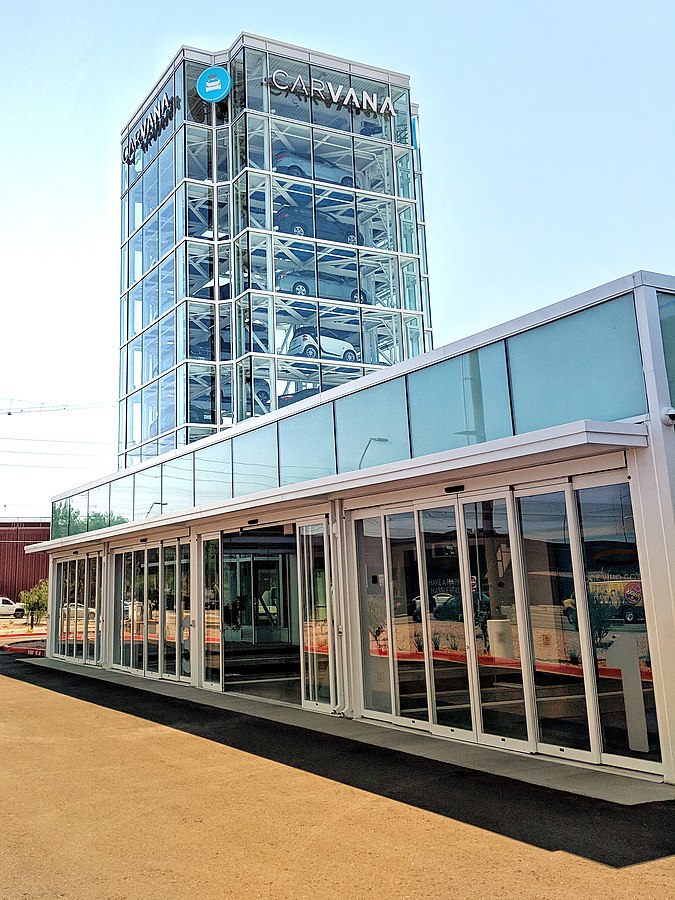
A process is a set of actions completed to achieve a specific objective. A business process is a set of actions completed to achieve a specific objective for the business, such as to complete a sales transaction, hire a new employee, or deliver a finished product to the customer.
Management Dimension
Management’s role is to continually make sense of challenges or opportunities in order to adapt and respond to the global environment. For example, the rapid proliferation of mobile devices has led to an increased preference for on-demand business models. Moreover, there is an increased consumer demand for low prices and high-quality service. To respond to these challenges, managers must develop an appropriate information technology and organizational strategy, allocate human and financial resources, and exercise responsible leadership. For example, Carvana appeals to technology-savvy consumers by allowing them to buy, sell, or trade-in used cars in an “online-only” format through its website, thereby completely changing the automobile-buying experience. This approach allows consumers to bypass the usual negotiation process involved in financing and purchasing vehicles from a traditional dealership. Purchased vehicles can be picked up at one of its car vending machines (Figure 1.4) or scheduled for next day delivery.
Information Technology Dimension
Information technology plays a powerful role in helping organizations achieve their strategic business objectives, streamline operations, and redesign themselves. As previously mentioned, information technologies consist of all of the various hardware, mobile devices, and software that organizations use to achieve their strategic business objectives. The specific information technology components include the following: (1) computer hardware and mobile devices; (2) software; (3) data management technologies; and (4) networking and telecommunications technologies.
Using Zoom for Course and Team Assignments

Zoom is a videoconferencing tool that we will be using for several course assignments, starting with your video introduction in this lesson. While Zoom has many videoconferencing capabilities, in this course we will limit our use of Zoom to
- starting meetings,
- accessing Zoom through the link in the Course Navigation Menu,
- making recordings, and
- submitting recordings to course assignments.
Your team may also choose to use Zoom to meet, if you wish.
You will receive step-by-step instructions for using Zoom the first time you encounter an assignment that requires it. These instructions will walk you through what you need to do to create recordings for your individual and team assignments. However, if this is your first time using Zoom, please complete the Zoom Learning Path for Participants so that you have the program properly installed on your computer and are ready to use it for your assignments.
Your Zoom recordings will be sent to the cloud (Kaltura). You will find a wealth of resources on Zoom and Kaltura at Penn State. Also see Zoom: FAQs & Troubleshooting for Penn State specific Zoom resources and commonly asked questions. Should you run into technical issues that are not addressed in the documentation, Zoom is also supported by the World Campus HelpDesk.

